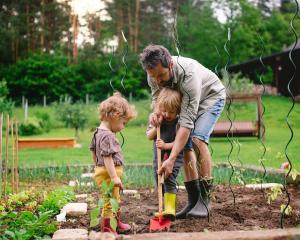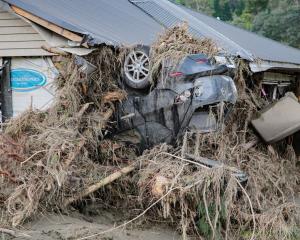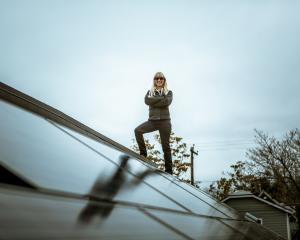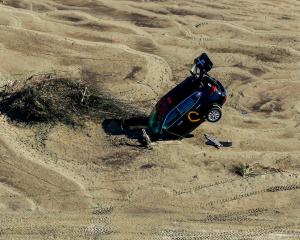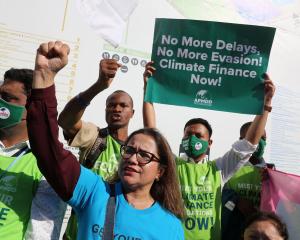
Imagine it is 2050. By now, global greenhouse gas emissions should be at net zero. Carbon and methane emissions should be radically reduced and carbon sinks, such as forests, hugely increased. These changes are essential to ensure the world stays within a safe-ish mean temperature rise of 1.5°C above pre-industrial levels.
But suddenly, alarming headlines start to appear in the media:
"Countries turning their backs on fossil fuel reduction pledges’’.
"Trees and land absorbed almost no CO2 last year. Is nature’s carbon sink failing?’’.
"Deforestation roaring back’’.
"Scientists baffled by unexpected pace of heating’’.
"Collapsing wildlife populations near ‘points of no return’’’.
"Economic damage from climate change is six times worse than predicted’’.
"Seven out of eight planetary boundaries now breached’’.
How could it have got to this perilous state? How could we have failed to take action over the 25 years between now and then?
Except ... these are all actual headlines from 2024. They are all based on published scientific studies and well-established facts.
What these (and other recent studies) are telling us is that climate change appears to be accelerating. The United Nations warns the world is on the edge of a "climate abyss’’. Without rapid and radical reductions in emissions in the next five years it is very likely the world temperatures will exceed 1.5°C within this decade, and will continue to climb after that.
We need to keep doing everything we can to avoid this future, and many individuals and groups are already taking action at a local scale. But at the same time our current government and some major New Zealand businesses are backsliding on previous commitments. This same regression is being seen across the world and is particularly associated with the current trend towards more right-wing governments. Barring a miraculous shift in the next couple of years, the world is on track for approximately 2.7°C warming by 2100, with likely devastating implications for lives, livelihoods and wellbeing.
Regardless of whether we are blithely continuing business-as-usual, or whether we are taking serious action to reduce emissions in our homes and businesses, we need to ask ourselves "what if?’’.
What if we (or "they’’) don’t manage to bend the emissions curve? What if global emissions, and associated temperatures, continue to rise? What does this mean for New Zealand, the Pacific and the world?
At the very least it means more destructive storms, crop failures, sea-level rise, unprecedented heat waves, floods and wildfires, along with accelerating biodiversity loss. These are already occurring and will only become worse. A World Bank report says climate change may thrust more than 100million people into poverty as soon as 2030. Recent research published in Nature concluded that, independent of future emission choices, the world economy will see an income reduction of 19% within the next 26 years due to the baked-in impacts of climate change. Estimates of climate-induced migration range from 50million to 1billion migrants during this century. Even the usually conservative World Economic Forum warns the current combination of conflict, rapid technological change, weakened economies and climate change mean only the smallest shock could edge economies and societies past the tipping point of resilience.
What we are facing is unprecedented for humanity on a global scale. Yet peoples of the world have previously experienced extreme environmental changes at local and regional levels. Many indigenous cultures, for example, have extensive experience of climate and other environmental disruptions, and of the implications of over-reaching local resource limits in the past. They have adapted their knowledge, practices and worldviews to sustain their everyday lives within the changed contexts and continue to do so. We have much to learn from the past to help us think about the future.
I have recently been reading an extremely interesting series of papers published by the Royal Society of the United Kingdom that are examining how past societies have responded to environmental crises, such as extended periods of drought or cold. One paper, for example, investigated more than 150 past crises in multiple world regions at different historical periods.
What they found was that societies had diverse experiences that bore little or no relationship to the type or severity of the environmental crisis. Some experienced famines, major civil wars and societal collapse, while others responded with reforms that ultimately enhanced wellbeing. They concluded that whether a society is resilient and adapts positively, or experiences maladaptation and collapse, isn’t just to do with how severe the environmental stressors are. It is also to do with how the society already functions. Stressed social systems are easily destabilised by environmental change.
The research found vulnerability to collapse tends to build up over time. A rising population and unequal distribution of wealth and opportunity depresses living standards among much of the population. Wealthy elites vie with each other for power and influence. Constrained resources affect state finances. People become frustrated with their poor conditions, elites become more powerful and state authority weakens or is corrupted. Conflict resolution mechanisms become increasingly ineffective. At this point, environmental change can become the tipping point for social and economic collapse, as occurred in many of the examples.
In some cases, the social and governance systems that collapsed were subsequently rebuilt to become more inclusive and equitable. And on rare occasions, societies anticipated the emerging crisis and introduced reforms that meant they were resilient despite the environmental disruptions.
What was it about the small subset of societies that made them capable of adapting to a changing environment? How did they respond to environmental crises with positive adaptations that increased their resilience and inclusivity, while others faced major disruptions or spiralled into increasing polarisation and conflict?
In simple terms it came down to social cohesion and flexibility.
But it’s not that simple to achieve. It would involve societal and political change in advance of the accelerating impacts of climate change. It means building resilience to extreme physical and economic disruptions at local, regional and national scales. It requires enhancing inclusivity and reducing inequities. It involves caring for each other and for the local environments that sustain us. People at all scales — from national and local governments to communities and businesses — need to commit to working together. It requires a readiness to alter expectations about wealth, and to change what and how we produce and consume. None of this is straightforward, but it can be done, as other societies have shown us in the past.
Climate change has the potential to disrupt almost every aspect of modern civilisation. Looking to the past can help us find the path to a safer future. Ka mua, ka muri.
Janet Stephenson is a research professor at the University of Otago Centre for Sustainability.







